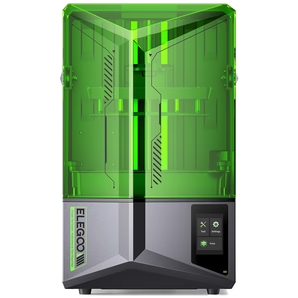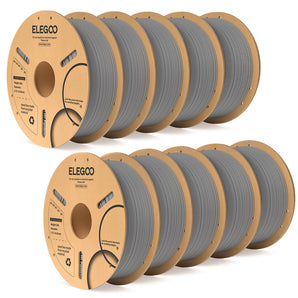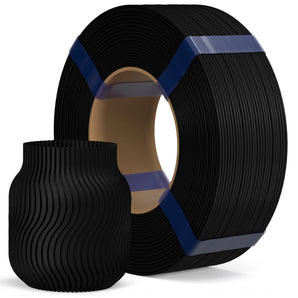3D printing technology is having a significant impact on medical 3D printing, leading to big improvements in patient care and treatment.
3D printing in medicine has many uses, like creating implants that fit a patient's body perfectly and making 3D models to help surgeons plan complex procedures.
This article explores how 3D printing is becoming a key part of healthcare and is opening doors to new medical breakthroughs.
Article Outline:
- What is Medical 3D Printing in Healthcare?
- Surgeons' Use of 3D Models for Better Patient Results
- Custom Implants as the Future of Orthopedic and Dental Surgeries
- FDA's Regulatory Challenges in 3D Printing
- Benefits of 3D Printing for Medical Device Manufacturers
- The Potential of 3D Bioprinting in Regenerative Medicine
- The Impact of In-House 3D Printing in Hospitals
What is Medical 3D Printing in Healthcare?
Medical 3D printing, sometimes referred to as additive manufacturing, is the process of creating three-dimensional, solid objects from a digital file.
In healthcare, it is used to manufacture a variety of items, including prototypes, functional medical equipment, and patient-specific replicas of bones, organs, and tissues. This innovative technology allows medical professionals to visualize pathologies, practice procedures, and provide customized care to their patients.
Using medical 3D printing, the healthcare industry can now offer solutions tailored for individual needs, catering to the unique anatomy and conditions of each patient.
The precision of this approach has transformed implant and prosthetic manufacture, ensuring they fit more comfortably and work better. Beyond that, 3D printing in medicine is being used to create complex medical devices such as heart valves, hearing aids, and even synthetic skin.
Applications of 3D printing in healthcare are further marked by the increasing use of 3D bioprinting. The method of producing cell patterns in a limited space using 3D printing technology, where cell function and viability are retained within the printed construct, is known as 3D bioprinting.
3D Bioprinting
This component of medical 3D printing holds the possibility of creating tissue, and possibly organs, suited to the needs of the patient, thereby eliminating the limits of organ donation and transplant rejection.
Surgeons' Use of 3D Models for Better Patient Results
Surgeons from a variety of disciplines have begun to use 3D printing in medicine for preoperative planning. Surgeons can see the anatomy they will meet during surgery by creating 3D printed models based on patient-specific images.
This pre-planning results in shorter operation durations, a lower risk of surgical error, and better patient outcomes.
3D printed anatomical models are especially useful in complex procedures, such as intricate orthopedic surgeries or delicate neurosurgical interventions.
Surgeons can better anticipate future obstacles and optimize their surgical approach by having a real model to analyze and even practice on.
Furthermore, these models can be used to educate patients about their diseases and proposed treatment regimens, increasing patient engagement and informed consent.
Customization also plays a critical role here. A 3D printer can produce surgical guides that fit exactly into a patient's anatomy, leading to more accurate incision lines, implant placements, or bone removals.
This degree of customization was previously unattainable and underscores the positive impact that 3D print technology has on the healthcare system.
Custom Implants as the Future of Orthopedic and Dental Surgeries
One of the most groundbreaking uses for 3D printing in healthcare is the creation of customized implants for orthopedic and dental surgery.
Traditional implants come in a range of standard sizes and shapes, which may not be suitable for all patients, requiring surgeons to make adjustments during the procedure.
However, 3D printed implants are made to fit each patient's specific anatomy, leading to more natural and comfortable outcomes.
In orthopedics, the ability to customize implants such as knee and hip replacements can result in a significant increase in patient mobility and decreased recovery times.
The 3D printing process also allows for the creation of highly complex structures, which can encourage bone growth and integration, enhancing the longevity of the implant.
The dental industry is also witnessing a transition to 3D printed solutions, including crowns, bridges, and even entire dentures. 3D printing allows dental professionals to replicate a patient’s tooth structure with precise accuracy, resulting in restorations that feel and appear almost identical to natural teeth.
Moreover, the speed at which these dental appliances can be produced significantly cuts down on waiting times for patients.
FDA's Regulatory Challenges in 3D Printing
The evolution of the 3D printing industry also brings regulatory challenges, particularly for institutions like the Food and Drug Administration (FDA). With the medical use of 3D printing rapidly advancing, the FDA must ensure that 3D printed products meet stringent safety and effectiveness standards before they are approved for clinical use.
Regulating 3D printers and the materials used becomes essential as the range of applications and complexity of 3D printed devices increases.
Unlike traditional manufacturing processes, 3D printing can produce devices layer by layer with intricate internal structures. This can pose challenges for FDA oversight, as it requires new approaches to evaluating product quality and safety.
Additionally, with 3D printing capable of creating patient-specific medical devices, the FDA is faced with a novel set of variables.
Every bespoke item might be slightly different, making standardization of approval processes more complex.
This is compounded by the rapid rate of technological advancement and the need for regulatory frameworks that can adapt quickly without stifling innovation.
Benefits of 3D Printing for Medical Device Manufacturers
Medical device manufacturers are among the key beneficiaries of advances in 3D printing technology. As additive manufacturing progresses, it allows for a more streamlined design and manufacturing process, enabling rapid prototyping and quicker time-to-market for new devices. This agility gives medical device companies a competitive edge, as they can respond faster to market needs and patient-specific demands.
Additionally, 3D printing enables the manufacture of complex medical devices that are difficult or impossible to create using traditional manufacturing methods.
This includes devices with intricate geometries or those that require customization for individual patients. This capability allows medical device manufacturers to cater to niche markets and develop innovative products that can significantly improve patient care.
Another striking advantage is the cost benefit associated with 3D printing. With this technology, medical device manufacturers can produce small batches of specialized devices without the need for expensive tooling or traditional production lines.
This reduces waste and overhead costs, making it an efficient and sustainable option for manufacturing medical devices.
The Potential of 3D Bioprinting in Regenerative Medicine
3D bioprinting is a particularly exciting frontier in the applications of 3D printing in healthcare.
This technology combines principles of 3D printing with those of regenerative medicine by using biomaterials, such as living cells, to create tissue-like structures that can mimic the natural composition of organs and tissues.
This carries the promise of producing viable human tissues for transplantation and drug testing – a significant leap for medical research and patient treatment.
Regenerative medicine focuses on repairing or replacing damaged cells and tissues in the body.
With 3D bioprinted structures, researchers and medical professionals are exploring opportunities to create skin for burn victims, cartilage for joint repairs, or even entire organs for transplantation.
The goal is to eventually relieve the pressure on organ donor lists and decrease transplant rejections by using the patient's own cells.
However, while the promise of 3d bioprinting is vast, there are significant challenges to overcome.
These challenges include ensuring the viability and functionality of the printed tissues, integrating them within the human body, and navigating the complex ethical and regulatory landscapes associated with such advanced technology.
The Impact of In-House 3D Printing in Hospitals
The adoption of in-house 3D printing by hospitals marks a significant shift in the landscape of patient care.
By bringing the manufacturing capabilities of medical models, devices, and even implants into the clinical setting, hospitals can greatly improve their efficiency and the level of care they offer.
With in-house 3D printing facilities, medical professionals can rapidly produce the tools and devices they need, significantly reducing waiting times for patients and potentially improving surgical outcomes.
It enables a swift transition from diagnosis to treatment, as personalized surgical instruments and patient-specific models are available on-demand, ensuring a streamlined process tailored to the patient's specific circumstances.
Moreover, having access to 3D printing within a hospital setting fosters a collaborative environment where engineers, doctors, and patients can work together to find the best solutions.
It allows for real-time iterations and adjustments to designs, culminating in products and solutions that better meet the unique needs of each case.
In summary:
- Medical 3D printing creates tailored devices and implants, improving patient outcomes.
- 3D patient-specific models aid surgeons in safer, more precise surgery planning.
- Custom implants enhance recovery comfort in orthopedic and dental surgeries.
- The FDA is addressing regulatory challenges in the rapidly evolving 3D printing sector for safety and efficacy.
- Medical device manufacturers benefit from 3D printing's flexibility, cost efficiency, and competitive advantage.
- 3D bioprinting has the potential to transform regenerative medicine with transplantable tissues and organs.
- In-house 3D printing in hospitals speeds up healthcare delivery and fosters collaborative problem-solving.





























































































































































